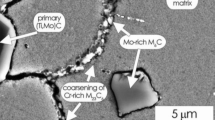Abstract
This study focuses on modelling the fatigue life reduction of an AlSi9Cu3 aluminium alloy caused by macro-porosity. The objective was to develop an engineering approach to fatigue life prediction for structural elements with macro-porosity defects. By following this approach a finite element analysis is first applied to assess the dependence of the strain-concentration factor, caused by a failure-dominant pore, on the nominal strain, the pore size and the proximity to the specimen surface. This dependence is then modelled by a nonlinear equation with three independent variables, i.e. the nominal strain, the pore size and the pore proximity to the specimen surface. The parameters of this equation are determined according to the results of the finite element analysis using a real-valued genetic algorithm. The proposed numerical approach was validated using experimental results. For this purpose, cylindrical specimens were manufactured by a high-pressure die casting and three levels of porosity were deliberately introduced into the specimens. The specimens were then tested at several strain levels and the corresponding fatigue life curves were estimated. The statistical significance of the fatigue life reduction due to the porosity level was statistically analysed and the experimental results were compared to the fatigue lives that were calculated with the presented strain-concentration model. The comparison showed a good agreement between the calculated and the experimentally obtained fatigue lives.









Similar content being viewed by others
Notes
When testing different porosity levels at the same strain levels, a wide fatigue life range is expected. This part of the study searches for significance in the differences between the porosity levels.
References
Horstemeyer MF (2003) Numerical, experimental, nondestructive, and image analyses of damage progression in cast A356 aluminum notch tensile bars. Theor Appl Fract Mech 39:23–45
Fan J, McDowell DL, Horstemeyer MF, Gall K (2003) Cyclic plasticity at pores and inclusions in cast Al–Si alloys. Eng Fract Mech 70:1281–1302
Skallerund B, Iveland T, Harkegard G (1993) Fatigue life assessment of aluminum alloys with casting defects. Eng Fract Mech 44:857–874
Linder J, Axelsson M, Nilsson H (2006) The influence of porosity on the fatigue life for sand and permanent mould cast aluminium. Int J Fatigue 28:1752–1758
Wang QG, Apelian D, Lados DA (2001) Fatigue behaviour of A356-T6 aluminum cast alloys. Part I. Effect of casting defects. J Light Metals 1:85–97
Murakami Y, Endo M (1994) Effects of defects, inclusions and in homogenities on fatigue strength. Int J Fatigue 16:163–182
Gao YX, Yi JZ, Lee PD, Lindley TC (2004) The effect of porosity on the fatigue life of cast aluminium–silicon alloys. Fatigue Fract Eng Mater Struct 27:559–570
Gall K, Horstemeyer MF, Degner BW, McDowell DL, Fan J (2001) On the driving force for fatigue crack formation from inclusions and voids in a cast A356 aluminum alloy. Int J Fract 108(2001):207–233
Seniw ME, Fine ME, Chen EY, Meshii M, Gray J (1997) Relation of defect size and location to fatigue failure in Al alloy A356 cast specimen. In: Proceedings of the 1997 TMS Fall Symposium, Sept. 14–18. ASM International, Indianapolis, IN, USA, pp 371–379
Fintova S, Konstantova V, Konečna R, Nicoletto G (2008), Experimental study of porosity and fatigue behavior of cast Al–Si alloys. Conference Metal 2008, Czech Republic
ASTM E606-92 (1996) Standard practice for strain controlled fatigue testing
Ramberg W, Osgood WR (1943) National Advisory Committee for Aeronautics. Technical note no.902, Washington
Janežič M (2010) The influence of randomness of damage model parameters on development predictions of product durability. Ph.D. Thesis, University of Ljubljana, Slovenia
Wright AH (1991) Genetic algorithms for real parameter optimization. In: Rawlins GJE (ed) Foundations of genetic algorithms. Morgan Kaufman, London
Temby L, Vamplew P, Berry A (2005) Accelerating real-valued genetic algorithms using mutation-with-momentum. In: The 18th Australian Joint Conference on Artificial Intelligence, Sydney, Australia
Manson SS (1952) Behavior of material under conditions of thermal stress. Heat Transfer Symposium, University of Michigan
Coffin LF (1954) A study of cyclic-thermal stresses in a ductile metal. Trans ASME 76:931–950
Buffière JY, Savelli S, Jouneau PH, Maire E, Fougères R (2001) Experimental study of porosity and its relation to fatigue mechanisms of model Al–Si7–Mg 0.3 cast Al alloys. Mater Sci Eng A 316:115–126
Klemenc J, Fajdiga M (2012) Estimating S–N curves and their scatter using a differential ant-stigmergy algorithm. Int J Fatigue 43:90–97
Tabachnick B, Fidell LS (2007) Using multivariate statistics, 5th edn. Pearson, United States of America
Author information
Authors and Affiliations
Corresponding author
Rights and permissions
About this article
Cite this article
Bižal, A., Klemenc, J. & Fajdiga, M. Modelling the fatigue life reduction of an AlSi9Cu3 alloy caused by macro-porosity. Engineering with Computers 31, 259–269 (2015). https://doi.org/10.1007/s00366-013-0345-7
Received:
Accepted:
Published:
Issue Date:
DOI: https://doi.org/10.1007/s00366-013-0345-7




